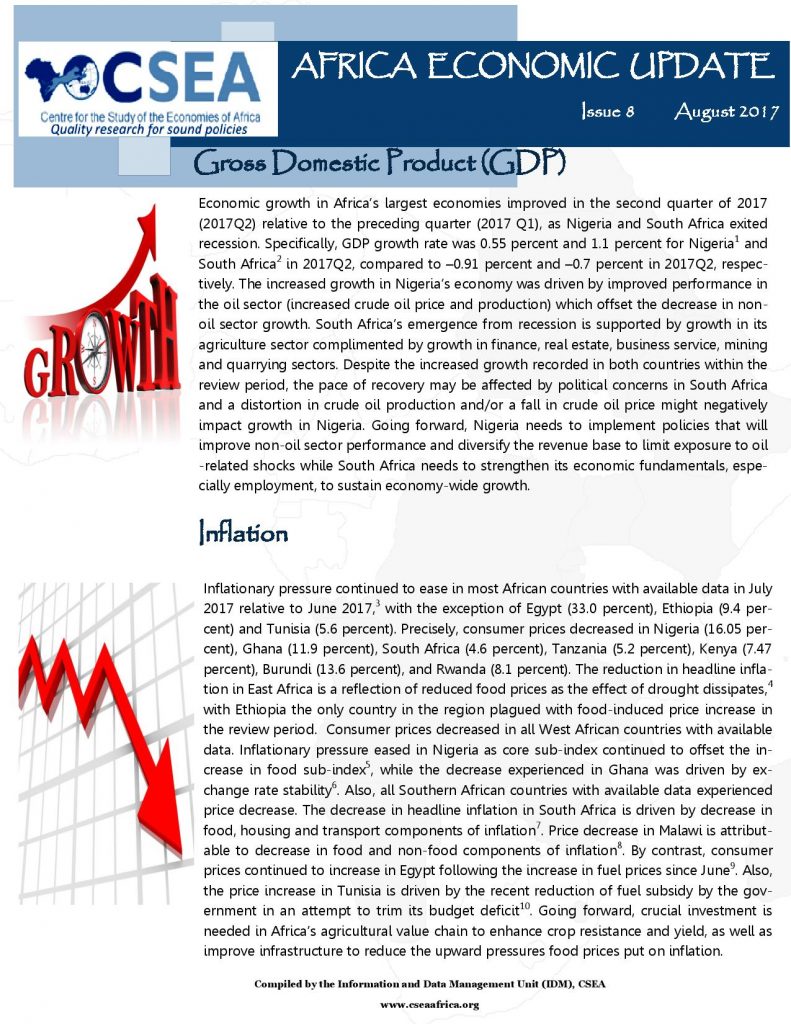Macroeconomic Report & Economic Updates

September 25, 2017
Africa Economic Update (Issue 8)
Economic growth in Africas largest economies improved in the second quarter of 2017 (2017Q2) relative to the preceding quarter (2017 Q1), as Nigeria and South Africa exited recession. Specifically, GDP growth rate was 0.55 percent and 1.1 percent for Nigeria and South Africa in 2017Q2, compared to 0.91 percent and 0.7 percent in 2017Q2, respectively. The increased growth in Nigerias economy was driven by improved performance in the oil sector (increased crude oil price and production) which offset the decrease in non-oil sector growth, while South Africas emergence from recession is supported by growth in its agriculture sector complimented by growth in finance, real estate, business service, mining and quarrying sectors.
